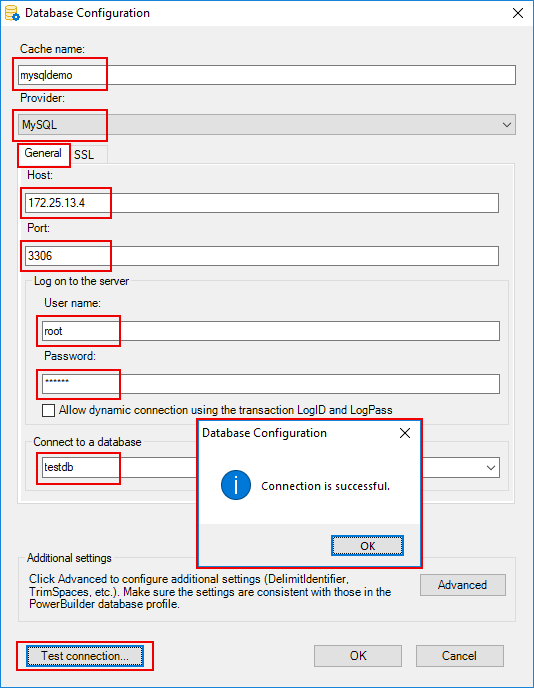There are two connection methods for the MySQL database: General connection and SSL connection. We will show you how to use these methods one by one.
To configure the MySQL database connection using the General method:
-
In the Database Configuration dialog box, enter any text as the cache name.
-
Select MySQL from the Provider list, and then select the General tab.
-
Input your IP address or your machine name to Host.
-
Input the port number.
-
Enter your Username and Password.
-
Enter or select your database name from the Connect to a database list.
-
Click Test Connection to make sure the connection is successful.

To configure the MySQL database connection using the SSL method:
-
After configuring the settings in the General tab, select the SSL tab.
-
Select the SSL mode.
Currently only Preferred and Required modes are supported.
-
None -- Client is using an unencrypted connection.
-
Preferred -- Client attempts to connect using encryption, falling back to an unencrypted connection if an encrypted connection cannot be established.
-
Required -- Client requires an encrypted connection and fail if one cannot be established.
-
VerifyCA -- Client requires an encrypted connection and the CA certificate needs to be verified.
-
VerifyFull -- Client requires an encrypted connection. Both CA certificate and client certificate need to be verified.
For more, refer to Using encrypted connections.
-
-
Specify the SSL private key.
-
Specify the SSL CA certification.
-
Specify the SSL certification.
-
Click Test Connection to make sure the connection is successful.


